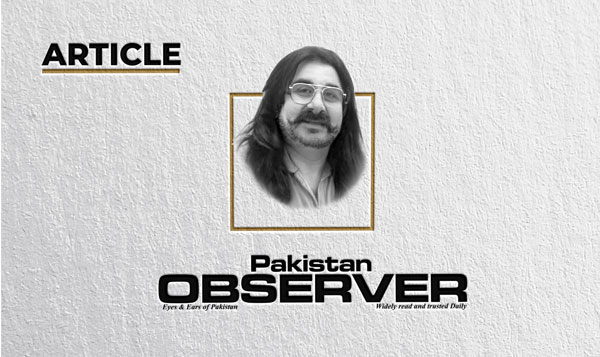Unipolarity is now history
MULTIPOLARITY will henceforth define geopolitics. Lesser powers will struggle to be totally restricted to one camp or the other. Multi-alignment will thus emerge as an alternative, an inevitable necessity. That may not be possible in all cases, though. Thus, a fascinating interplay of multipolarity and multi-alignment is poised to become the new normal of geopolitics. The US is still considered, by and large, the undisputed hegemon of the world. However, its unipolar moment is a genuinely long vorbei. It now faces massive multidimensional challenges to its global pre-eminence from the increasingly assertive Sino-Russia Combine. This has engendered a vibrant and dynamic flux in geopolitics. It has further let loose a flurry of alignments, re-alignments and multi-alignments as lesser powers scramble to re-position themselves in anticipation of an inevitable restructuring of the global order.
What is it that allows a country to multi-align without any adverse reactions from the global powers? Foremost, would be its inevitability for the powers-that-be in the geopolitical, geostrategic and geoeconomic domains. Next would be an inescapable convergence of interests with the major players of both camps. Thereafter, it could be a well-balanced mix of tangible and intangible factors that would force both camps to engage it. Generally, major global powers tend to create exclusive spheres of influence through blocs, camps, groupings, alliances and coalitions to assert their power, authority, control and overall hegemony at the regional global level. They expect their allies, partners and friends to display a certain degree of loyalty and commitment to their ostensibly collective causes. Multi-alignment would thus indicate a certain degree of independence from the global powers’ rigid, absolute and totalitarian controls. Western Europe, an avowed ally of the US, however, found to its peril that was not always permissible. It was brusquely browbeaten into achieving a clean break from all energy and economic ties with Russia; whither multi-alignment?
In tangible terms, a country’s geographical location and size; its population; quality of human resources; fossil fuel and mineral reserves; water and agricultural resources; industrial and economic strength and resilience; military capacities and capabilities; in effect, its overall power potential would determine the quality and terms of its international status and relationships. Amongst the intangible qualities, a strong, competent, committed nationalistic leadership will guarantee some degree of autonomy and freedom to seek divergent, multifarious international ties. A strong national and political will, a strategic vision and foresight, a well-defined strategic direction and a well-crafted foreign policy would be equally important. Additionally, political stability within the country, a very strong and largely self-sufficient economy, peace within and without, a stable regional environment etc amongst a plethora of lesser aspects would all impact its international relations. Such factors can combine to position a country well for multi-alignment.
This is clearly a precarious and unsustainable situation. Surviving in two diametrically opposing camps is perhaps a function of India’s geographical size, its population, its economy and the resultant humungous market, its military-nuclear-missile capabilities and the adroit conduct of its foreign policy. However, this may all change when push comes to shove in US-China relations and it is required to bite the bullet and stand up for its convictions—or the lack of them! KSA and UAE are the new adherents to such a policy. India is a country currently exercising multi-alignment with more than a fair degree of success. It is continuing with its decades-old multidimensional ties with Russia; has been anointed a strategic partner by the US and is being built up as a bulwark against China while simultaneously carrying on a whopping bilateral trade of about USD 125 billion a year with it. It is juggling this quite extraordinary tri-lateral arrangement very well thus far.
Their rules have been epitomized by fickle-minded, knee-jerk policy formulations and hesitant, meek decision-making. Pakistan’s weak economy and poor leadership have always kept it susceptible to coercion by all powers, major, medium or minor! It has thus never been able to make truly independent foreign policy choices on critical issues that involve the major powers. Pakistan recently engaged Russia to buy discounted oil—only after seeking embarrassing approval from the US. A nuclear Pakistan which is politically unstable, economically weak and dependent upon external sources will never be allowed any freedom of thought and action—the then PM Imran Khan’s abortive attempt to recast the OIC comes to mind! These events define Pakistan’s status and its limits to multi-align!
Pakistan’s impeccable geographic location and formidable power potential give it great geopolitical, geostrategic and geoeconomic importance and advantages. It can boast of substantial tangible and intangible qualities. However, it will always feel constrained in its foreign policy options for a variety of reasons. Its Achille’s heel has always been a combination of a near-insolvent economy, political instability and a dearth of competent national leadership. It has been perpetually at war with itself on religion-sect, terrorism, or domestic political feuds. Its national leaders, civil and military alike, have all been inept statesmen, have lacked strategic vision and foresight and have been unable to give any profound strategic direction to the nation.
For it to multi-align with aplomb and dignity, it must redefine and reinvent itself. To that end, it must create the necessary political stability within, evolve a vibrant, self-reliant, sustainable economy and elect a true, competent, nationalistic leadership. Pakistan needs to acknowledge this fundamental change in the dynamics of geopolitics and reposition itself accordingly. It must decide to either multi-align or become a committed camp follower.
—The writer is editor, book ambassador political analyst and author of several books based in Islamabad.
Email: naveedamankhan@hotmail.com










